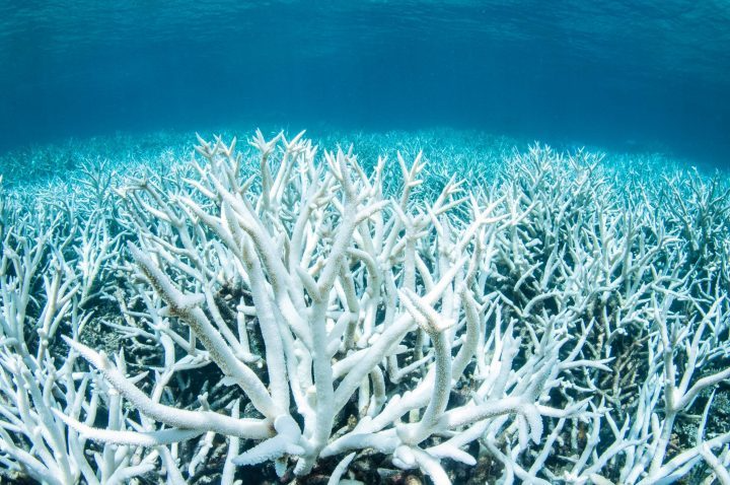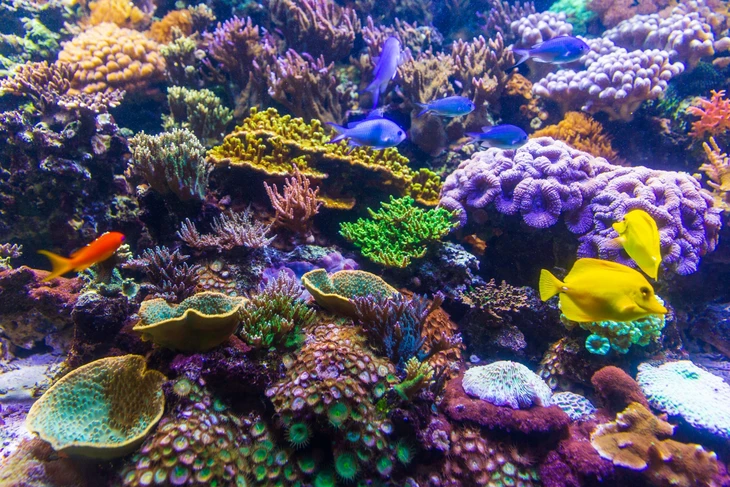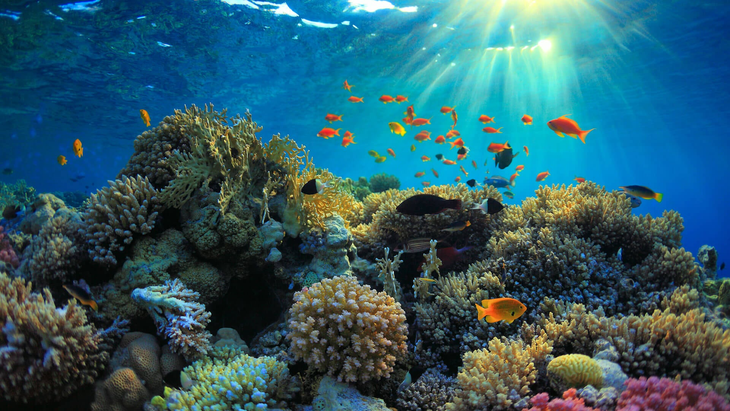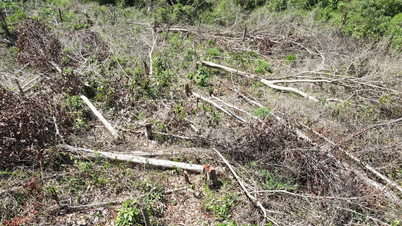The coral bleaching situation is so bad that NOAA is forced to add new warning levels to its bleaching scale, due to the increasing risk of coral mortality - Photo: REUTERS
"In the future, we may never see temperatures below the threshold for global bleaching again. This is a phenomenon that is completely changing the face of the planet and our ability to sustain life and livelihoods from the ocean," the AP news agency quoted Dr. Mark Eakin, secretary in charge of the International Coral Reef Society and former director of the Coral Reef Watch program of the US National Oceanic and Atmospheric Administration (NOAA), as warning on April 23.
This is the fourth global bleaching event since 1998, and has surpassed the extent of the damage from the 2014-2017 event, which affected about two-thirds of the world's coral reefs. The current crisis began in 2023 and is believed to be caused by ocean warming, a direct result of climate change.
2023 was also the hottest year on record for Earth. The average surface temperature of the ocean (excluding the polar regions) reached a record 20.87 degrees Celsius, a temperature that can kill corals.
This is particularly dangerous because corals are not only home to about 25% of marine species, but also play a vital role in fisheries, tourism , and protecting coastlines from erosion and natural disasters. Corals are known as the “rainforests of the ocean” because of the high levels of biodiversity they support.
Corals get their vibrant colors from the symbiotic algae that live inside them, but today most are a dull white - Photo: Petr Kratochvil/creative commons
Corals get their vibrant colors from the symbiotic algae that live inside them, providing them with nutrients through photosynthesis. However, when water temperatures rise over long periods of time, these algae begin to produce toxic compounds, forcing the corals to expel them. As a result, the reef turns white, exposing its calcified skeleton, and becomes severely weakened, potentially leading to mass deaths.
Around the world, initiatives are underway to conserve and restore coral. A laboratory in the Netherlands has been cultivating coral fragments from the Seychelles in an artificial environment so that they can be released back into the ocean. In Florida, several salvage projects have removed coral from high temperatures to recover before releasing them back into the ocean.
However, scientists stress that the most fundamental solution is to reduce greenhouse gas emissions, especially CO₂ and methane, which mainly come from burning fossil fuels.
Without drastic solutions, we will no longer have many opportunities to see the magical beauty of the ocean like this - Photo: Beyzon
“The best way to protect coral reefs is to tackle climate change at its root,” Dr Eakin said. “Without reducing emissions from human activities, any other effort is just a temporary solution, like a Band-Aid on a deep wound.”
Dr Melanie McField, co-chair of the Caribbean Coordinating Committee of the Global Coral Reef Monitoring Network (GCRMN), warned that indifference is the end of coral ecosystems. “Everyone needs to take responsibility. Inaction is the ‘kiss of death’ for coral reefs.”
The alarming warning comes as some governments continue to push for fossil fuels and roll back clean energy programs in the name of economic growth. However, scientists say such actions could have serious and long-term ecological consequences.
Read moreBack to Topic Page
Back to topic
MINH HAI
Source: https://tuoitre.vn/bien-co-toi-te-nhat-lich-su-con-chua-toi-20-ran-san-ho-tren-the-gioi-co-mau-sac-20250424165048202.htm





![[Photo] Prime Minister Pham Minh Chinh chairs the Government's special meeting on law-making in May](https://vphoto.vietnam.vn/thumb/1200x675/vietnam/resource/IMAGE/2025/5/22/1c880aae96fd4e0894abc47a46fe19ba)






















































































Comment (0)